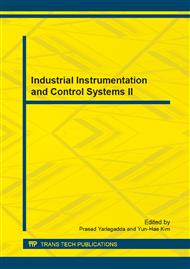p.480
p.484
p.489
p.493
p.498
p.506
p.513
p.519
p.523
Semi-Physical Simulation Platform Design Base on FMI
Abstract:
FMI is put forward by ITEA2, the target is the realization of cross platform, many areas of joint simulation. FMI is a standard interface which is used to implement the simulation. It is complete the following parts of specific functions: To load FMU model which is generated by other software , edit and compile the model , then download to target machine which VxWorks is running on; Realization of seamless connection with VxWorks target machine; Supporting the simulation model which is build by C/C++ language . Through this platform, FMU model and C/C++ model can be used in the Real time operating system of VxWorks, and realize the real time monitoring of simulation data, which make it becoming possible to realization of joint simulation.
Info:
Periodical:
Pages:
498-505
Citation:
Online since:
July 2013
Authors:
Keywords:
Price:
Сopyright:
© 2013 Trans Tech Publications Ltd. All Rights Reserved
Share:
Citation:


